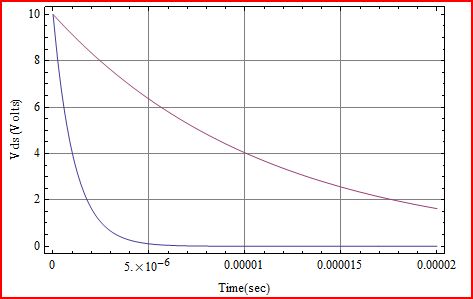Not enough Miller time? Just extend it.
Spehro has the right approach here. I am going to ride his coat tails and expand on the idea a little, because it is such a good idea for this kind of thing.
\$C_{\text{dg}}\$ is special in a FET because it provides negative feedback to the gate. Part of what that means is that it also gets multiplied by the transconductance (\$g_{\text{fs}}\$) of the FET. So, it has a larger effect than it's size would lead you to believe. But, let's forget about \$C_{\text{dg}}\$ for now and instead add an external capacitor from drain to gate (\$C_{\text{fb}}\$), because if you really want to slow down the rise and fall times of the FET that's what you'll do. Here is a schematic to help illustrate:

As \$V_{\text{drv}}\$ rises and \$V_{\text{ds}}\$ falls you can probably see how \$R_g\$, \$R_L\$, \$g_{\text{fs}}\$, and \$C_{\text{fb}}\$ all play a part in limiting the value of \$V_{\text{gs}}\$. Small signal transfer function of \$V_{\text{ds}}\$ relative to \$V_{\text{drv}}\$ is:
\$-\frac{R_L}{s C_{\text{fb}} \left(g_{\text{fs}} R_g R_L+R_g+R_L\right)+1}\$
And, \$R_g\$, \$R_L\$, \$g_{\text{fs}}\$, and \$C_{\text{fb}}\$ are all involved in forming the pole. (Note, all the FET capacitances are left out here for clarity.)
To show approximately how this works out, put in some values into a very simplified model. \$R_g\$ = 1000 Ohms, \$R_L\$ = 2 Ohms, \$V_{\text{drv-pk}}\$ = 5V, \$V_{\text{cc}}\$ = 10V, \$g_{\text{fs}}\$ = 5 S.
Here is a plot of \$V_{\text{ds}}\$ on application of \$V_{\text{drv-pk}}\$.

The blue curve is \$C_{\text{fb}}\$ = 100pF, and the purple curve is \$C_{\text{fb}}\$ = 1000pF. Of course, switching loss will be huge and huger. It should also be mentioned that adding a Miller feedback capacitor like this will make the circuit more sensitive to dV/dt turn on.





